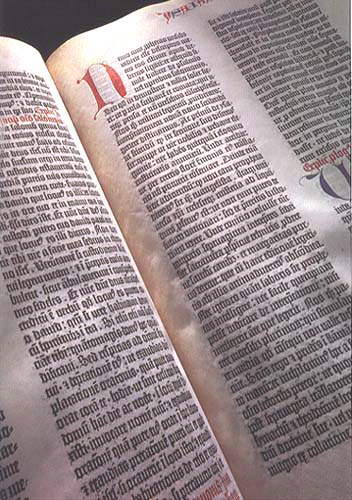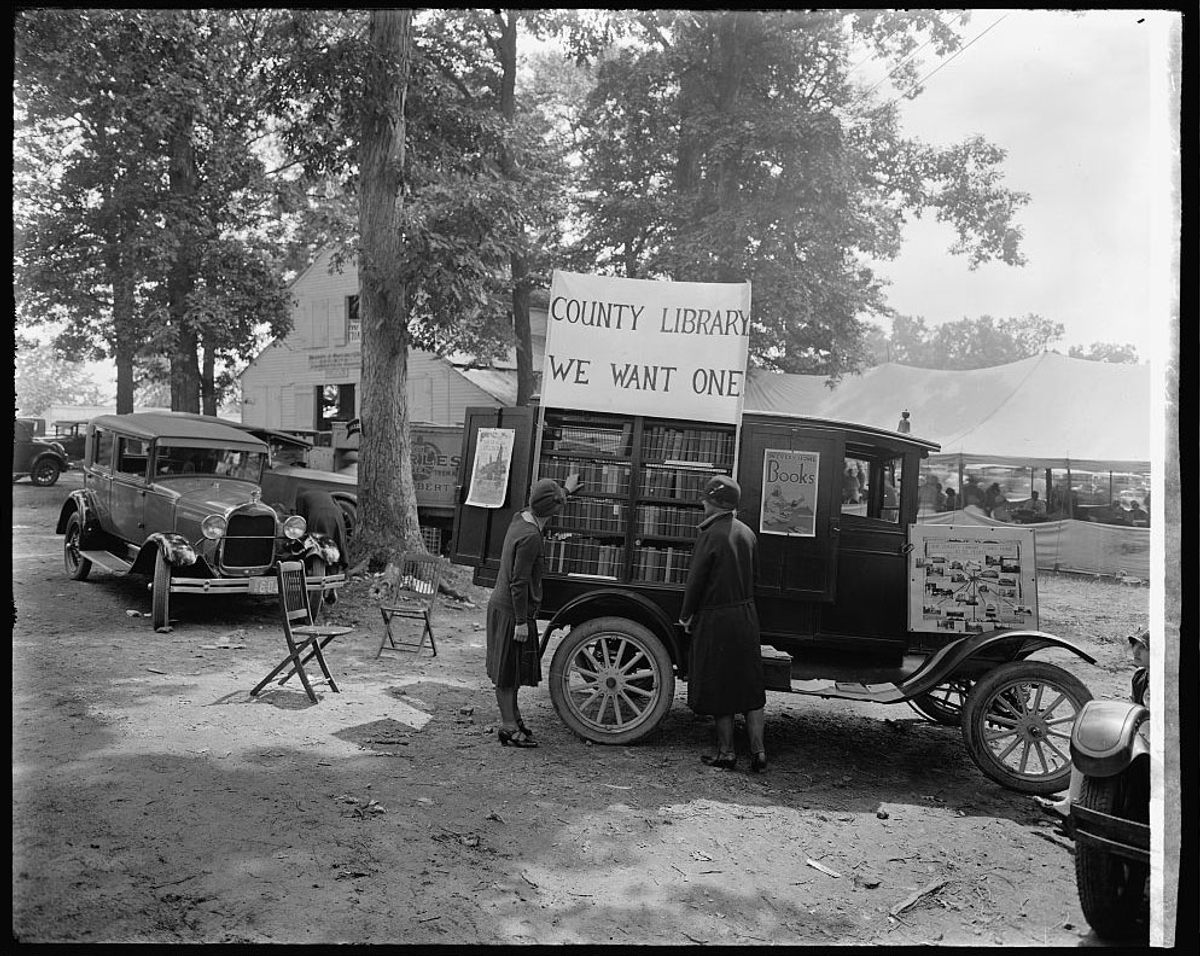One of three perfect copies of the Gutenberg Bible came to the Library of Congress in 1930. (Photograph by Reid Baker)

One hell of a bookshelf
Thomas Jefferson was a man of encyclopedic interests and his library included works on architecture, the arts, science, literature, and geography. He owned books in French, Spanish, German, Latin, Greek, and one three-volume statistical work in Russian. It was his belief that Congress needed ideas and information on all subjects and in many languages in order to govern a democracy.
The British army invaded the city of Washington and burned the Capitol, including the 3,000-volume Library of Congress. By then retired to Monticello, Jefferson offered to sell his personal library to the Congress to “recommence” its library. The purchase of Jefferson’s 6,487 volumes for $23,940 was approved in 1815.

Libraries for(almost) all
Carnegie Steel Company was the largest and most profitable industrial enterprise in the world in the 1890s. Founder Andrew Carnegie, at one time the richest man in the world, sold his company to J. P. Morgan 1901 for $480 million. Carnegie devoted the remainder of his life to large-scale philanthropy and wrote “Wealth”, an advisory for those who wanted to lead philanthropic lives. Half of the public libraries built in America between 1883 and 1929 were built with money donated by the Scottish-American businessman. Carnegie was one of the highest profile philanthropists of his era – building 1,650 libraries, Carnegie Hall and Carnegie Mellon University.
His requirements for funding a library were that local governments:
*demonstrate the need for a public library
*provide the building site
*pay staff and maintain the library
*draw from public funds to run the library—not use only private donations
*annually provide ten percent of the cost of the library’s construction to support its operation
*provide free service to all (Unfortunately services were not free to all in the segregated library system in my city. In 1913, the Carnegie Library opened on East Henry Street to serve Savannah, Georgia’s African American community. One of the most significant changes came when segregated library services ended in 1963 and library service in the Chatham-Effingham-Liberty Regional Library was truly available to all citizens under one roof.)

The librarian said giddy-up!
Before 1900, there were very few traveling libraries in the United States and in the United Kingdom. One of the earliest mobile libraries in the United States was a mule-drawn wagon carrying wooden boxes of books. It was created in 1904 by the People’s Free Library of Chester County, South Carolina, and served the rural areas there.

Another early mobile library service was developed by Mary Lemist Titcomb (1857–1932). As a librarian in Washington County, Maryland, Titcomb was concerned that the library was not reaching all the people it could. The annual report for 1902 listed 23 “branches”, each being a collection of 50 books in a case that was placed in a store or post office throughout the county. Realizing that even this did not reach the most rural residents, the Washington County Free Library began a “book wagon” in 1905, taking the library materials directly to people’s homes in remote parts of the county. (See book delivery by horse in rural Kentucky)

With the rise of motorized transport in America, a pioneering librarian in 1920 named Sarah Byrd Askew began driving her specially outfitted Model T to provide library books to rural areas in New Jersey. The automobile remained rare, however.
Following the Great Depression in the United States, a WPA effort from 1935 to 1943 called the Pack Horse Library Project covered the remote coves and mountainsides of Kentucky and nearby Appalachia. “Packhorse librarians” brought books and similar supplies on foot and on hoof to those who could not make the trip to a library on their own.
Fun facts from around the world:
·Zimbabwe utilizes a donkey-draw bookmobile that, in addition to providing books, also provides some technology services.
·Kenya has the Camel Library Service with a collection of over 7000 books.
·Thailand has elephant-drawn libraries.
·Some coastal communities in Norway have their library needs met by itinerant ships.
“I had found my religion: nothing seemed more important to me than a book. I saw the library as a temple.” Jean Paul Satre
RESOURCES:
https://www.loc.gov/loc/legacy/loc.html
https://www.liquisearch.com/andrew_carnegie
https://money.cnn.com/magazines/fortune/almanacamericanwealth/2007
Thanks for this history of American libraries!
But have you read the Midnight Library????
SO interesting. I spent a lot of time at the library as a kid. I do reserve books from our small library in town but with a Kindle, too easy to go digital. The times, they have a-changed. The Gates Foundation aside, I’d like to hear about more philanthropy from today’s bajillionaires.